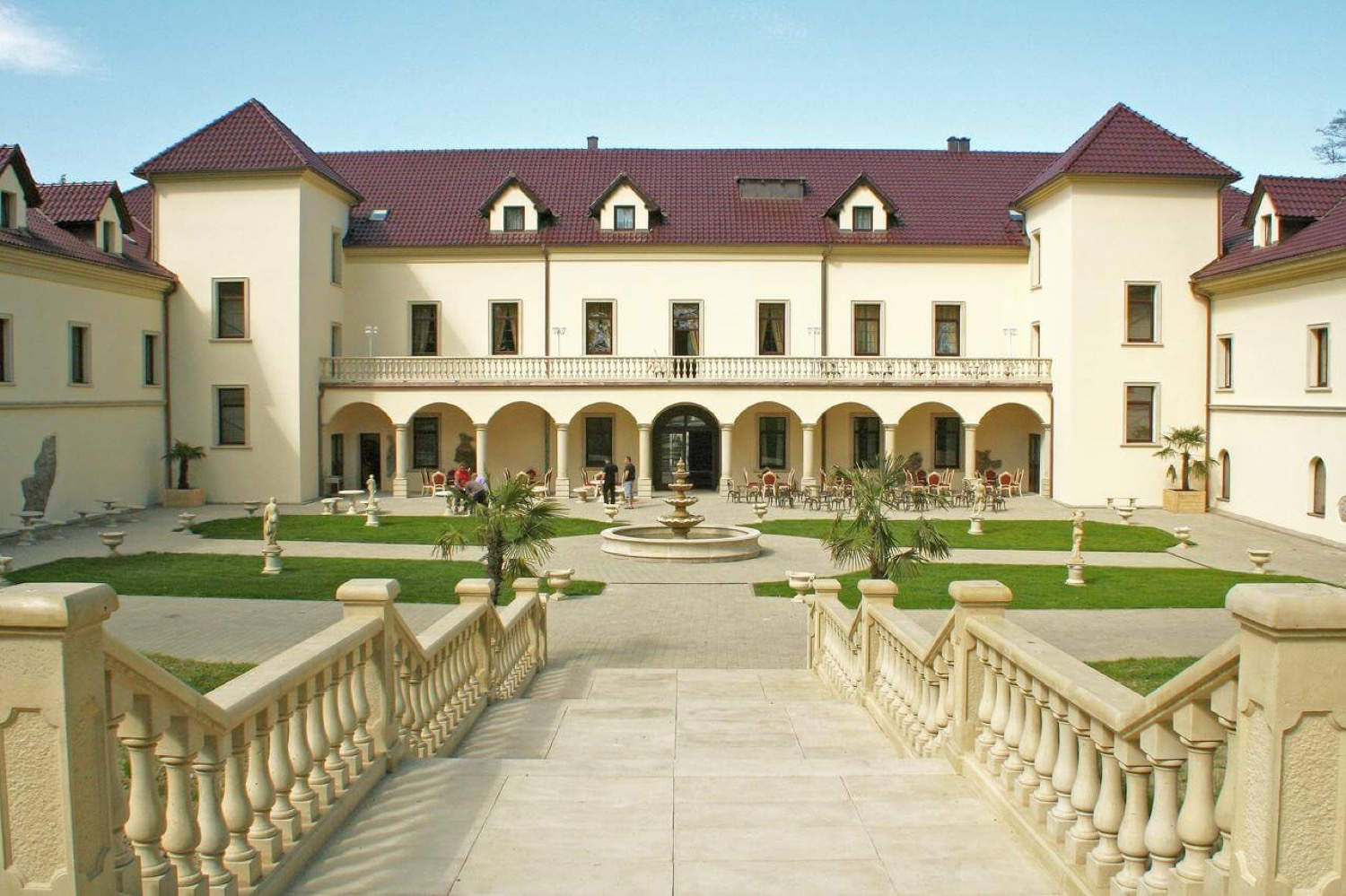Libá Chateau
Cheb Karlovarský kraj Czech Republic
castle, chateau
Zámek Libá
Cheb Karlovarský kraj Czech Republic
castle, chateau
The Liebenstein Castle was founded in the second half of the 13th century as the residence of ministeriales subject to the imperial palatinate in Cheb
Zámek Libá (dříve též Liebenstein) stojí na vyvýšenině nad Libským potokem v jihovýchodní části obce Libá, nedaleko Františkových Lázní v západních Čechách
Previous names
Libá Chateau, Zámek Libá
Description
The Liebenstein Castle was founded in the second half of the 13th century as the residence of ministeriales subject to the imperial palatinate in Cheb. It was named after Liebenstein Castle near Tischenreut, Bavaria. Rupert of New Liebenstein is mentioned as the first castle owner in 1264. After the Liebenstein family had died out, the castle was acquired by Franz Gosswein, a Cheb burgher, from King Jan Lucemburský (also denoted as John of Bohemia) in 1346. King Václav IV (also denoted as Wenceslaus IV of Bohemia) took Liebenstein away from Gosswein's descendants in 1381 and gave it to the Cheb hetman, Johann of Leuchtenberg. In 1425, Liebenstein Castle and estate was acquired by the Zedwitz family of Neuberg (present-day Podhradí), which was elevated to counthood in 1790. The castle had remained in the possession of the Zedwitz family up to 1945.
The castle is arranged into two sections. A large cylindrical tower (bergfrit), originally built as a free-standing tower behind the round wall, and the old "Upper Palace" on the south side have been preserved from the original castle core. The younger "Lower Palace" was built in the middle of the 14th century and a cross wing with a gateway protected by two bastions was built during another reconstruction in the mid 15th century. When the Zedwitzs divided their property in 1498, the castle description indicated that both its parts were used separately. In the middle of the 16th century, when the castle was reconstructed in Renaissance style, both palaces were connected by a new one-storey wing and a corner oriel was added to the north-west palace. Baroque reconstructions (the first being completed in 1719) entirely changed the medieval castle into a comfortable chateau. The entry wing was reconstructed and all facades were renovated. The moats were filled and new chateau terraces were built on their site. The chateau interiors were furnished in Rococo style and later in Classicism style. In 1755, the Baroque single-nave Church of St. Catherine was built on the site of a small Gothic church.
The castle and chateau in Libá have been abandoned since 1945 and they faced gradual dilapidation. A devastating fire accelerated its ruin in the late 1980’s. Partial reconstruction commenced in the early 1990’s, however, it ended with the conservation of the entry wing. The castle and chateau in Libá thus remains closed to the public and its dilapidation continues.
http://cestovani.kr-karlovarsky.cz/
Zámek Libá (dříve též Liebenstein) stojí na vyvýšenině nad Libským potokem v jihovýchodní části obce Libá, nedaleko Františkových Lázní v západních Čechách. Od roku 1958 je chráněn jako kulturní památka ČR.
Hrad a obec vznikly okolo poloviny 13. století. Roku 1264 je zmiňován Ruprecht z Nového Liebensteina, čímž je doložena existence hradu. Na sklonku 13. století rod Liebensteinů vymřel a hrad byl pobořen. Roku 1346 panství i se zničeným hradem získal jako české korunní léno chebský měšťan František Gosswein a v roce 1355 jej se svolením Karla IV. obnovil. Později Václav IV. Gossweinům kvůli četným loupežím hrad odňal a propůjčil jej v roce 1381 Johannu I. z Leuchtenberka. Ten jej roku 1400 prodal chebském měšťanu Erhardu Rudischovi. Roku 1425 panství získal rod Cedviců, který ho i s hradem vlastnil až do 20. století. V 18. století byl goticko–renesanční hrad postupně přestavěn na barokní zámek. Roku 1912 Benno Cedvic prodal panství Leopoldu Hauserovi.
Nearby castles





